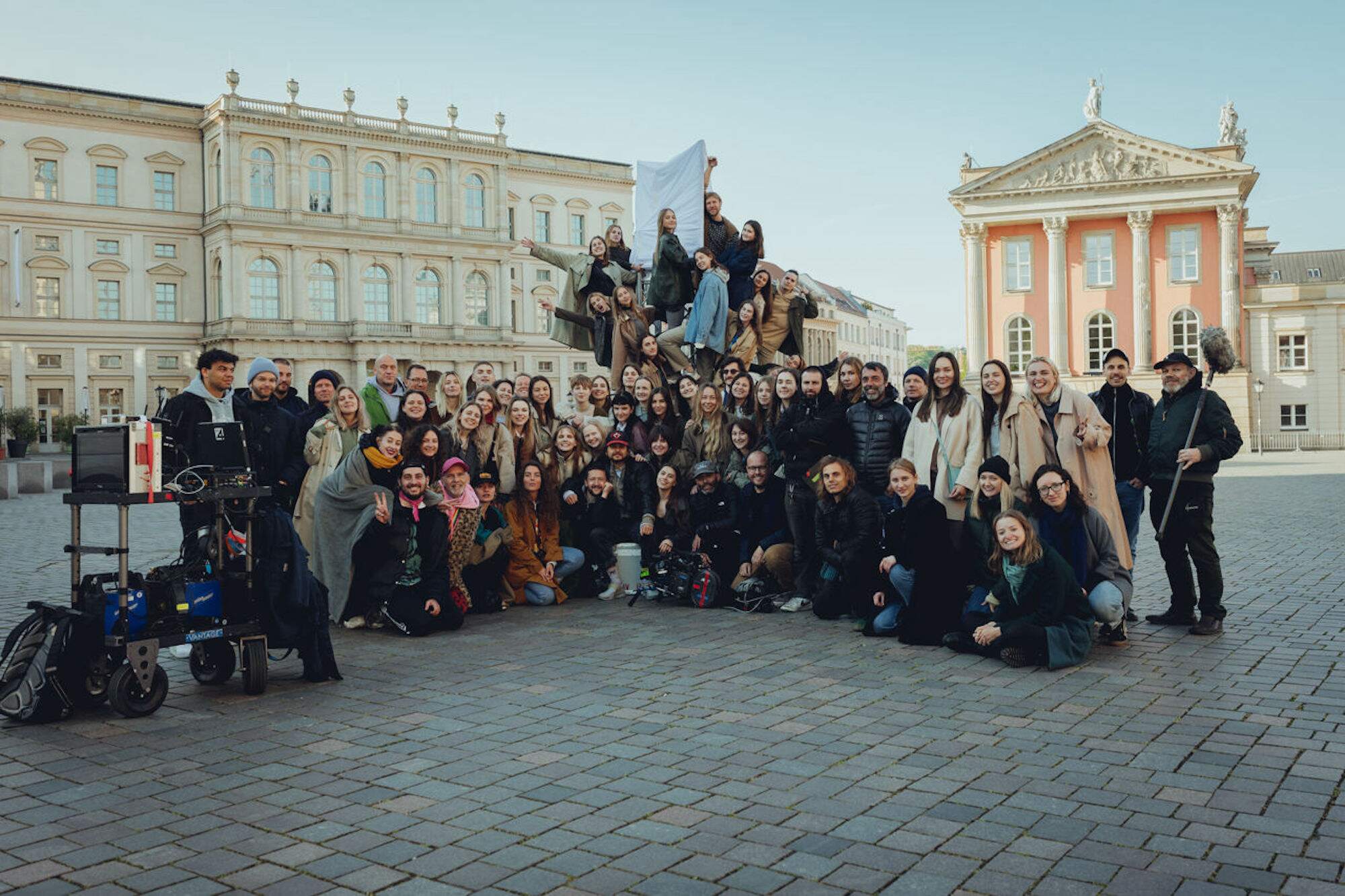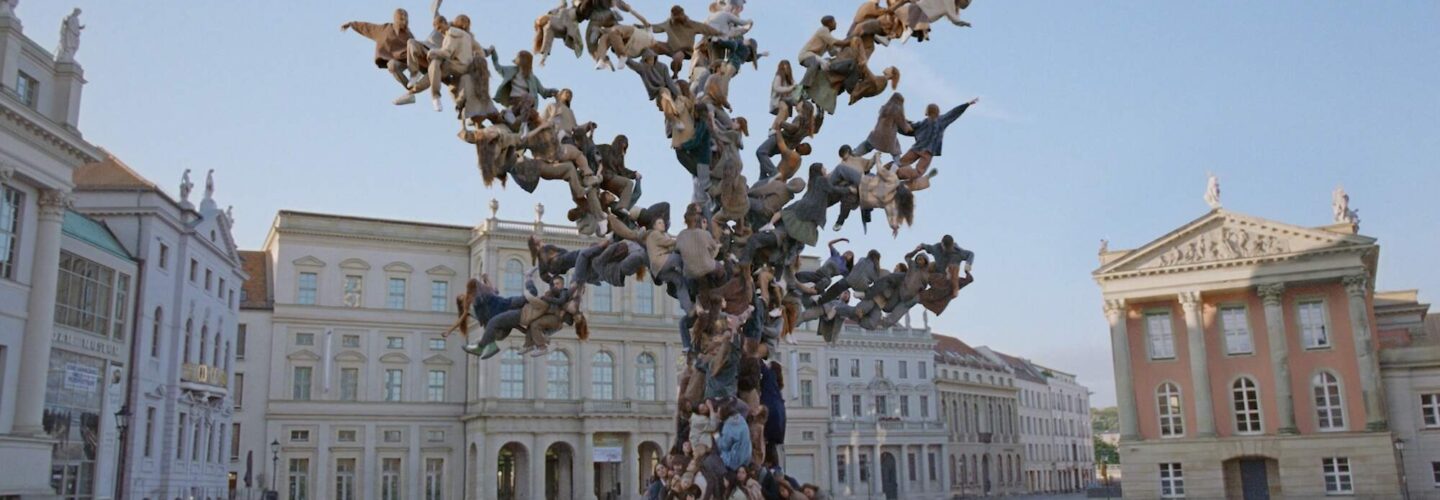
The last project by Stink Films Director Andzej Gavriss that we featured was a his defiant (and now multi-award winning) LGBTQ music video We Will Become Better, which told the story of two men in Russia who are forced apart because of the country’s homophobic laws yet remained together spiritually. His latest film Uprooted continues in this humanitarian interest, this time centring on the Ukrainian refugee experience of PTSD. Gavriss conveys the horrifying nature of this trauma through its sensorial tactility, highlighting how war lives on in the minds of those who’ve experienced it. It’s a deeply moving short in which 60 Ukrainian refugees were involved across all aspects of production. DN joined Gavriss for a conversation about his ongoing intentions for Uprooted, the decision to focus the film around the sensory experience of PTSD, and the creative involvement of refugees that underpinned the entire artistic process.
What inspired you to make a short centred on the lasting trauma experienced by refugees and the ways in which it can suddenly be triggered by certain sounds or scenarios?
One morning I woke up to an email from the NY Times saying that Putin has started the war in Ukraine. The terrible news and heartbreaking images were coming from every corner of the internet and snowballed into an avalanche of paralysing pain. During the following weeks my wife Julija and I tried to do everything to somehow help: sending donations, protesting, and emotionally supporting our Ukrainian friends. No matter how much we helped, it did not feel enough. The feeling of guilt for being in a warm apartment and eating tasty food, while our friends were stuck in shelters with nothing to eat or drink, was eating us alive. It was a feeling that I have never experienced in my life.
The subject felt so important, but not being talked about in the public.
My wife and I were born and raised in Latvia, Riga. Since our early childhood there was a Russian – Latvian conflict present due to the historic roots of Latvia. What happened in Ukraine back in 2014 and what is happening right now, it hit us in the heart. This film is not only how we feel, it’s our statement, it has our soul and identity in it. As artists we had no other medium for us to capture our sorrow, pain and fears.
A month into the war with Ukraine, my Ukrainian friends began to arrive in Europe after fleeing their homes. One of those friends and a close collaborator, Konstantin Koval, came to Berlin where I live. One night Konstantin was over for dinner and we were talking about war, politics and refugees. I shared a few stories I heard about the PTSD Ukrainian refugees are experiencing, how every loud noise reminds them of bombing, every hard flash of light at night brings back the heavy war memories of gunshots and explosions. The subject felt so important, but not being talked about in public so we came up with an idea to make a film. I never wanted the film to be forced, or made out of self-pity, so I decided to wait it out and tell the story to my refugee friends and colleagues from Ukraine to gauge their reactions to the idea.

Our friend and Costume Designer Margarita Shekel arrived in Berlin from Kyiv. The blush and joy of life were gone from her face, it felt like I was looking at a different person. She told us how she and her mother spent hours hiding in the bathroom from heavy bombing and said their goodbyes to each other in case they didn’t make it. Looking out the window Margarita saw Ukrainian soldiers being shot and their bodies ripped apart. The Russian army exploded the bridge that was less than a few hundred meters away from her apartment. Her mom got a heavy shell shock and had trouble hearing.
After hours of conversation with Margarita, she brought up her PTSD. Even now being in a safe environment, hearing loud noises she got panic attacks. I decided to share the idea that I and Konstantin had about our PSA film. After hearing it out, she said that it’s exactly how she feels and it’s a really important subject to talk about. This encouraged me to continue these conversations with other Ukrainian people that suffered from PTSD. By the end of it, there was no doubt in my mind that we needed to proceed with the film. Blake Powell connected me with Rick Dodds, a Creative Partner at Don’t Panic, and together we developed the script.
One of the most powerful images in the film is the human tree which forms towards the end, where did the idea for that come from?
The human tree idea came to Production Designer Julija Fricsone Gavriss while at the meeting with our friend, Ukrainian Director Pavels Burak’s wife Katerina Nefeld. It was Katia’s second day in Berlin after leaving Kyiv and she was feeling worried because Pavel had to stay in Ukraine. Julija brought up the blooming sakura trees that we have in a park near our place to cheer her up. Katia got quite dreamy for a while and said “In a few weeks the chestnut trees would start blooming in Kyiv, how wonderful it would be to walk around the city and enjoy it”. This emotional moment inspired Julija to incorporate a blooming tree of people that give each other support and unity.
What was it like collaborating with Don’t Panic on the production?
Working with Rick Dodds, the Creative Partner at Don’t Panic, and his team was a blessing. It was apparent from the start that Rick genuinely cares about what he does. He and his team brought a lot of support and were always there to help us creatively and emotionally. Everyone from the refugee team absolutely loved him.


What were the biggest challenges you faced in making the film?
Konstantin and I wanted all the actors in the film to be real refugees, with their own stories to tell. For me the real challenge was to find the balance between getting the best performance out of the actors and keeping them in a psychologically safe environment. In order to do that, the talent and I spent a lot of time in rehearsals to establish a connection between each other, and build a safe emotional space.
A great experience was the unity within our production team. We had a big WhatsApp group where we shared any obstacles we ran into and everyone would come together to problem solve saying “I have an idea, I can help!” This group was imperative to us being able to make so much happen in such a short amount of time.
And how was the casting process in finding those actors?
Olga, who is the leading character in the film, basically portrays herself escaping war in Ukraine. A few months ago Olga woke up to the sounds of heavy bombing in her apartment in the middle of the night. All she managed to take with her was her backpack. Although Olga is one of the most talented young actresses I’ve worked with so far, her own experience made the performance so transcendent and real. She is a strong and independent young woman, she brought a lot of her own ideas and most importantly she portrayed the courage and unbreakable hope of her people.
I wanted all the actors in the film to be real refugees, with their own stories to tell.
For the bus scene we were looking for an eight year old kid. We approached Ukrainian ex-pat child actors because the idea of having a real refugee kid seemed wrong. Anna’s tape just blew me away, the acting was so real that I almost got a panic attack watching it. It was a no-brainer to cast Anna for our film. After confirming her for a role I found out that Anna was not acting on the tape. It was a real video of her that Anna’s mom took during them being trapped in their apartment while the Russian army was bombing their hometown.
I was not sure how to react and felt really unsure if Anna needed to relive the same horrific moment again while acting on set. After my concerns were sent to Anna’s mother, I received a personal letter from Anna saying that her dad is fighting in the war in Ukraine right now, and it’s an honor for her to participate in our project in order to tell her story and portray how most refugees feel while escaping the war. I did not know what to say, receiving such a mature letter from an eight year old kid, we could not break her hope and willingness to be a part of our message. With the blessing from her mother our team and I just couldn’t say no to Anna.

We needed a lot of extras to film the end scene which was being shot overnight in a huge square in Potsdam, just outside of Berlin. Tommy, our EP, had the idea to make a radio ad with local radio station Radio Potsdam. He called them and explained the project and our situation. They loved the idea and invited us to record the ad the next day. We ended up getting a great response and it was a huge success. To do projects like this you need to be very creative in production.
Everything in the film has a such a wide, cinematic look. What guided your visual approach on the shoot?
We explored multiple routes to authentically convey the effects of PTSD. While breaking down the storyboard Albert Salas and I were originally considering taking a rich visual storytelling approach. While rehearsing, we tried different camera moves, angles, and lenses which led us to taking a more basic handheld, Steadicam approach. It felt more pure and immersive to have the ability to react to actors’ movements and convey their emotions in a more authentic way.
My main goal with PSA films is to work on campaigns that inspire and change the way people think.
Is there anything else you wanted to add about the experience in general or the message you want to send out with Uprooted?
Massive respect to our refugee team for being brave, bold, full of life and inspiration. Thank you to everyone who participated and helped to make our film possible. Never in my life have I seen such unity from people across the globe. Additional thanks goes to Stink Films, Don’t Panic and UNHCR for supporting my vision and making real art together. It means a lot.
Any hints as to what you’ll be working on next?
At the moment my gifted co-writers and I are finishing a feature script that I am really excited about. My main goal with PSA films is to work on campaigns that inspire and change the way people think. Campaigns that are effective in improving important social problems. There are a lot of topics I want to explore, so I am constantly writing and connecting with creative directors who are on the same mission to make this world a better place.


